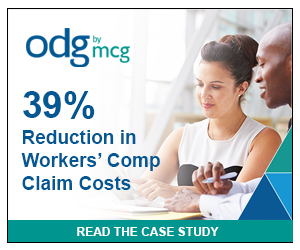Prescription Benefit Management for Employers - 1
Sunday, January 19, 2003 | 0
Prescription drug costs are the fastest rising component of workers' comp medical costs, advancing 16% last year and consuming close to a dime out of every medical dollar.
A portion of those rising costs can be attributed to an overall increase in drug usage. This is not entirely negative since drugs may take the place of other, more expensive alternatives, and may result in shorter disability periods. However, in workers' compensation, there are fewer alternatives to managing drug costs since the use of deductibles or co-payments is not available, and the use of generics is easily side-stepped.
There are some steps that employers can take to help contain prescription drug costs.
Some employers are now turning to pharmacy benefit managers (PBMs). Good PBMs can shave 25 to 30% off of total pharmacy costs, and the use of PBMs is growing as fast as pharmaceutical costs.
PBMs are effective because they are specialists in the interplay of drugs, patients, doctors, insurance companies, and The System, hence the term 'pharmacy benefit manager'.
One technique PBMs use is to interface with injured workers and their doctors, and steer them toward the use of generics when suitable. Overall, generic substitution can save as much as 80% on the cost of any given drug. While generics account for some 40% of all prescriptions nationally, a comparable statistic in workers' compensation is more than 45%. And in states with mandatory generic laws, such as California, PBM management can raise generic utilization to over 70%.
One guiding factor in choosing a PBM other than cost is what controls the PBM provides to ensure that there is restraint against over-utilization. Some form of measurement to ensure that the therapy put into place is working needs to be implemented, with established time lines towards the ultimate goal of returning the injured worker to the job. Typical injuries have treatment guidelines that are well established, and the PBM should be keyed into these to ensure that the drug therapy is working towards the ultimate goal. There should be coordination between drug therapy and treatment guidelines.
Some offerings may include an employee wellness program, mail order options (particularly for chronic conditions), and educational programs. While confined to a health care facility, the injured worker is typically given adequate drug education and usage is monitored. Once home, however, there is no monitoring, education basically stops and drug misuse (too much, too little, at inappropriate times) increases. A good PBM will involve the injured worker in an education and support program to ensure that the continuing drug therapy provides maximum benefit.
A PBM that is oriented towards workers' compensation will know the local players (doctors, attorneys, carriers) and will be more suited to managing all of the conflicting forces than one that has no work comp experience.
In addition, the work comp PBM will be more familiar with the types of injuries that are most common, as well as the treatment regimens that are typical for such injuries in any given geographic region.
Finally, many drugs have known contra-indications (meaning that one drug will interact negatively with another drug so that instead of helping the patient the mix makes things worse, causes complications or greater disability). PBMs are trained at recognizing drug contra-indications, which can happen easily in work comp because injured workers may be seen by many different physicians in different specialties, all prescribing drugs without full knowledge as to what other physicians may have prescribed.
In our next article we will review how to select a PBM that fits your needs.




Comments